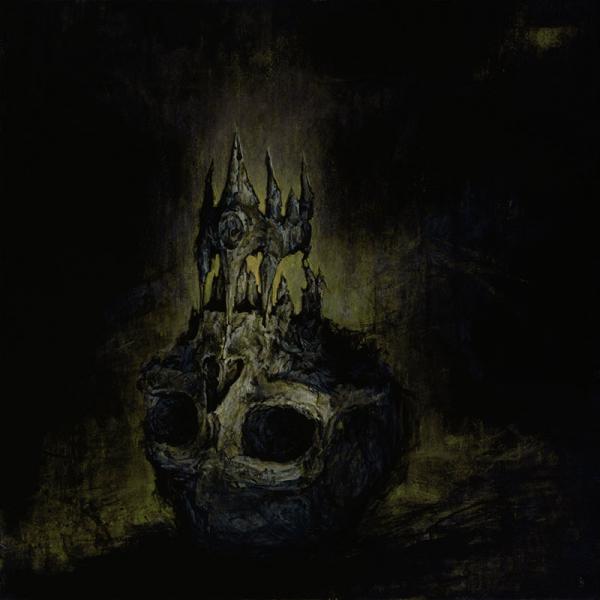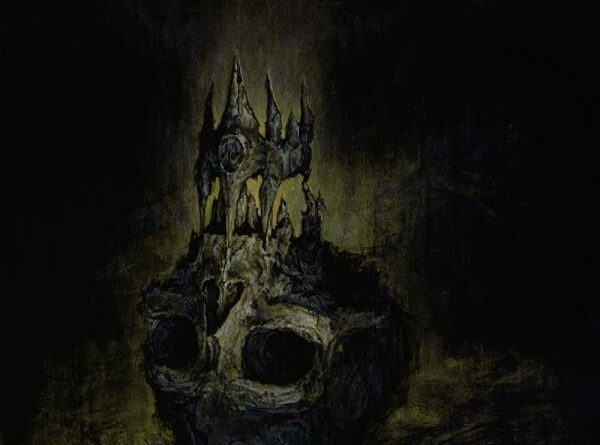HEAVY MUSIC HISTORY: Dead Throne – The Devil Wears Prada
There was a certain aesthetic associated with young metalcore bands in the late 2000s and early 2010s. Zany cartoon shirts, drippy, spiky logos, and straightened hair are the tropes that spring to mind to most readily in the heavy music community today when recalling the glory days of Warped Tour metalcore. And although these trends would indeed persist for the next few years, as the decade began to change, many of these bands began to shed this image for a cleaner cut, more mature look, and take new lyrical risks and probe new depths in both their musical and lyrical songwriting. There is no better poster child for this shift than Ohio six-piece THE DEVIL WEARS PRADA. and their fourth record, Dead Throne, a record that is a sterling example of a pivot that captured the hearts of fans and saw the band explore uncompromising anguish and ache in the best batch of songs they’ve written to this day.
The band fit the exact mold of Warped-core scene band right through their 2009 record With Roots Above And Branches Below, which saw the band exploring more melody and texture than they had before, and also produced some of the band’s most popular tracks that still endear themselves to fans of that era of metalcore. But it was 2010’s Zombie EP, a concept EP about the undead that hit harder and heavier than anything the band had released to date, and it immediately exploded with popularity with the fanbase. The band had already begun to modify their sound and image, but took note of the response to the EP and decided to truly take the middle path; balance the sound of their new record between the speed and ferocity of early material with the sheen and crushing bleakness of the Zombie EP. And as Dead Throne made its debut, there are immediate differences within that are almost startlingly arresting and truly portray a huge sense of maturity and growth.
The biggest and most important difference is in the delivery of lead vocalist and lyricist Mike Hranica. Right from the opening title track, there is a different weight to his voice and his words. Though the overarching theme of the record is a message of anti-idolatry, there is an obvious deep pain in Hranica‘s intonation. These songs just feel among his most personal, and it’s evident through his modulated screams, as he seems to really be exploring his range more on this record amidst his voice changing from With Roots Above… to Dead Throne. Songs like Constance and Forever Decay see Hranica at his most desperate, as his voice just pierces with a sadness yet unheard from the band. This sense of weightiness and sadness forms the entire tapestry of the instrumentals as well. With the band working with Adam D of KILLSWITCH ENGAGE fame as their producer for the first time, the guitar tone takes on a whole new shape. It’s thick and fuzzy, yet extremely cutting, and this leads to a sense of density to riffs and melodies. Songs like the aforementioned Constance and Mammoth bristle and grind like a buzzsaw and even feel a bit doomy at times, and the instrumental Kansas packs a gut punch without any sung or screamed vocals at all. It feels like a trudge through the the thickest of mud on the darkest of days, and this is also helped by the roaring thud of the the bass sound on this record, which appears throughout to shake the foundations and is mixed excellently.
Dead Throne also saw the band really grow in their sense of subtlety when it comes to incorporation orchestration and keyboards. This would be the last record featuring keyboardist James Baney, but his contributions to the tone of the record are huge, though not as sweeping as they were on With Roots Above And Branches Below. It’s the frantic energy in songs like Forever Decay and My Questions that add lush fabric to the tapestry of this record. And really, that’s what this record represented for THE DEVIL WEARS PRADA. This record truly feels like the first time the band constructed a purposeful, thematic record woven together and digested as a whole, as opposed to previous studio albums which were a bit more piecemeal. The sonic thread that Adam D provides is all designed to feel both cavernous and claustrophobic, with those previously mentioned sludgy bass tones mixed with some of the most soaring leads the band had ever used.
But what this record should be most remembered for is a showcase of maturity and growth; a true next step past the tropes and cliches of the scene bands of the era. It was a record that not only succeeded in its goal out of the gate, it blew away most of its competition through its willingness to go further into the darkness in sound and word than metalcore was going at the time. It is a peeling away of the heart of Mike Hranica, who runs himself more ragged than ever before, and the band complements his woe with immaculate riff writing and a perfect balance of light and shade in melodic construction. Dead Throne was the most honest record THE DEVIL WEARS PRADA had made to that point in time, and since. Its emotional weight far surpasses that of its peers, and its exploration in sound and texture rivalled any other metalcore release of the time, especially among more mainstream “scene” bands.
It’s an overlooked and underappreciated achievement in an era inundated with metalcore releases, but one that still stands head and shoulders above the competition and laid a blueprint for bands looking to keep the ears of their fanbases, but willing to open themselves to their deepest levels and take risks in sound and image for growth as musicians and as human beings. And for THE DEVIL WEARS PRADA, that growth occurred when the colours were shed away and the darkness underneath was allowed to show in all its rawness. In that regard, the true achievement of Dead Throne is how human a record it really is.

Dead Throne was originally released on September 13th 2011 via Ferret Music.
Like THE DEVIL WEARS PRADA on Facebook.

